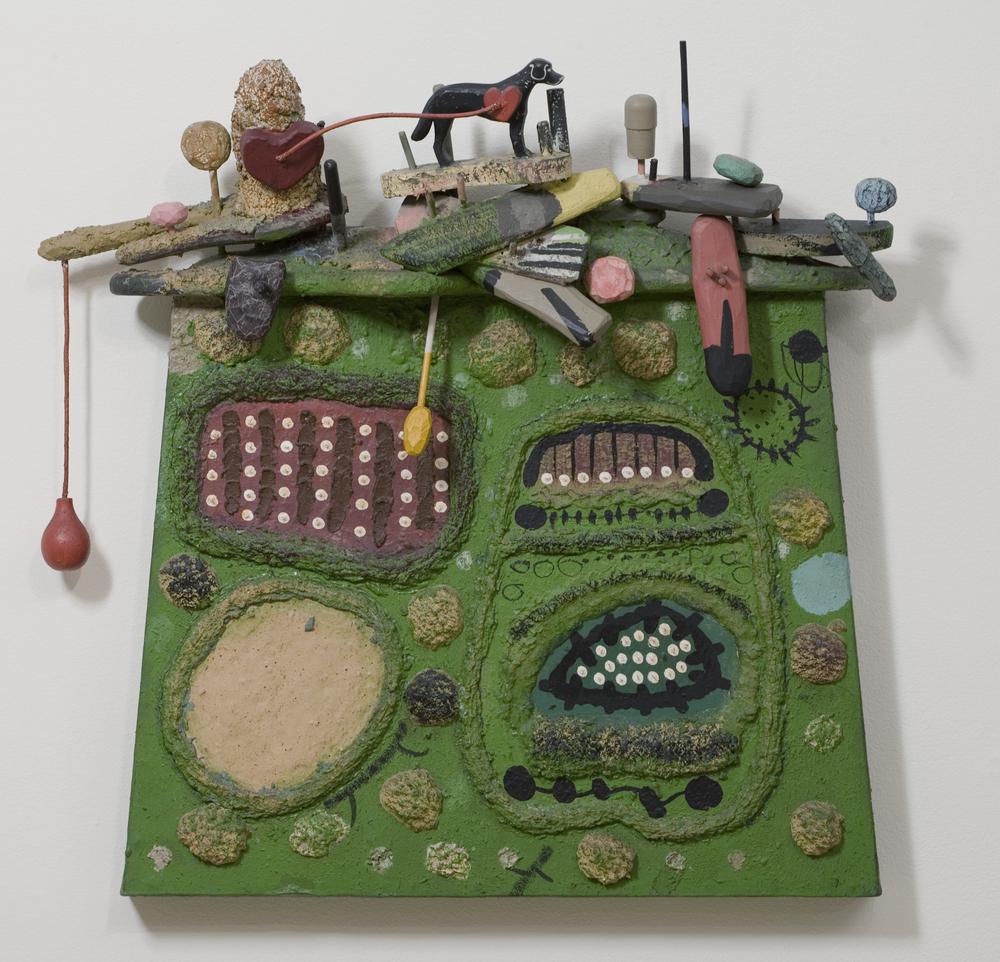Roy De Forest. Boardism: A One-Man Movement

Roy De Forest began using acrylic paint for its sticky, tactile properties. It could be used like glue to adhere objects together and suffused with glitter, sand, and glass fillers.1 He used it first not for painting but for building wall reliefs—compositions with wood slates, cardboard, and paper cutouts that projected from the frame of the canvas, transforming two-dimensional paintings into three-dimensional constructions brimming with energy.2 When the works debuted at San Francisco’s Dilexi Gallery in 1960, critic Dean Wallace exclaimed in his review for the San Francisco Chronicle, “De Forest (write this down in your lexicon of ‘isms’) is the inventor and sole exponent of the revolutionary form called Boardism. That’s right, Boardism. He takes boards, sticks, and irregular scraps of wood, other miscellaneous materials, just about every hue of paint known to man, and in a frenzied delight of creativity whips out some of the wiggiest, most utterly delightful works of art that have graced gallery walls within my recent memory.”3
Susan Landauer, Of Dogs and Other People: The Art of Roy De Forest (Oakland: Oakland Museum of California, 2017), 46. ↩︎
John Humphrey, Roy De Forest: Retrospective (San Francisco: San Francisco Museum of Art, 1974), n.p. ↩︎
Cited in Susan Landauer, Of Dogs and Other People: The Art of Roy De Forest (Oakland: Oakland Museum of California, 2017), 53. ↩︎